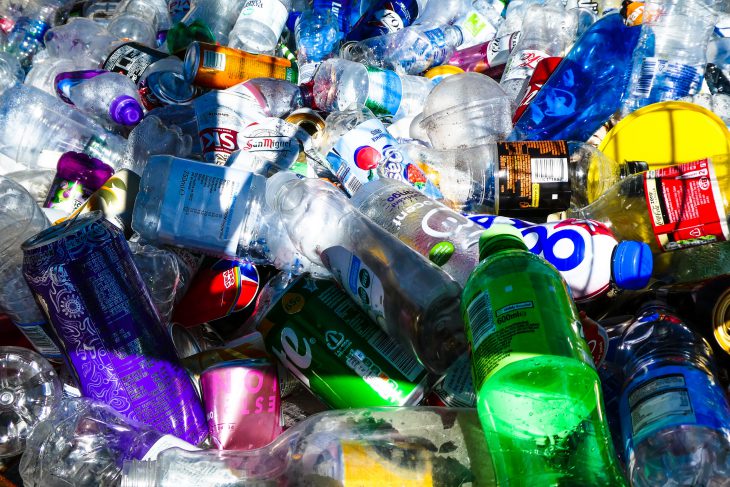Plastics are ideal for use in household and industrial products because they are strong and elastic, but these properties also make them difficult to break down. Every year, about 15 million metric tons of plastic enter the oceans, equal to the weight of 2 million elephants! Around 3/4 of this debris ends up in the deep oceans. Scientists are concerned about the effects these deep sea plastics may have on marine ecosystems. However, deep-sea plastics are difficult to study and expensive to sample.
Two geochemists from China recently took the manned submersible Shenhaiyongshi to the bottom of the South China Sea to take on the challenge. They took 20 separate dives down several kilometers to collect about 100 bits of plastic from the seafloor to study how they were degrading, and how quickly.
Most plastics decompose when exposed to light and oxygen, a process called photo-oxidation. They also undergo physical and heat degradation. These processes are relatively rapid on beaches, but the deep ocean is dark, cold, and calm, so it is not likely that these processes will be active there. Microbiologists have isolated bacteria able to break down plastic from shallow, cold marine habitats. So, the Chinese duo hypothesized plastic could be broken down in the same way in the deep sea.
To identify what kinds of plastic they had collected, the scientists used a method called Raman spectroscopy. Raman works by shining a beam of light particles called photons at a sample’s surface. Some of the photons collide with molecular bonds, which vibrate like springs, depending on which elements are bonded and whether they are single- or double-bonds. The photons bounce back in recognizable patterns called spectra, which are like “fingerprints” of certain types of bonds. Scientists use this information to determine the composition of the molecules.
Raman spectra from the deep-sea plastics showed that 80% of the samples were polyethylene (PE) and 14% were polypropylene (PP). PE is the most common plastic in the world and makes up everything from plastic bags to milk cartons. PP is widely used in food containers because it is heat resistant and won’t melt in the microwave. The rest were polyvinyl chloride (PVC) and other less common plastics.
The team looked for signs of decomposition on the surface of the samples with a scanning electron microscope (SEM). SEMs can magnify an object up to 1000 times more than the standard small microscopes you used in school by firing a rapid stream of tiny electrons over an object’s surface. The electrons interact with atoms on the surface, releasing secondary electrons in response. These secondary electrons are collected by a detector and used to make an image of the surface on a computer screen.
The SEM images revealed different types of degradation features on different types of plastics. PP sometimes had cracks, while other types of plastics only had scratches. PE samples were the most degraded, with rough surfaces and corrosion pits. The corrosion pits looked like small rods, worms, and filaments of similar shapes and sizes to bacteria. The researchers also found microbial cells in some of the pits, further supporting the idea that microbes helped degrade the plastic.
The duo then created detailed 3-dimensional images of the PE pits using another method, called photo-induced force microscopy (PiFM). PiFM consists of a metal tip the width of a few atoms attached to a cantilever. The cantilever taps the tip across a surface, measuring its height, friction, and electro-magnetic properties. PiFM confirmed that the corrosion pits were similar to pits produced by plastic-degrading microbes in the laboratory.
The researchers used the 3D images to estimate that up to 14% of the PE had been lost from the samples. They assumed the plastic had been there for 40 years, based on the pollution history of the South China Sea. At this rate it would take almost 300 years for the PE to fully degrade without some additional help.
These results demonstrate microbes help to break down PE plastic in the deep ocean, but it happens very slowly. Since they were unsure of the age of the plastics in their samples, the degradation time could be shorter if the plastics had spent less time on the seafloor. Regardless, PP, PVC, and other types of plastic lacked any corrosion pits – evidence that they could be resistant to biodegradation. The researchers say these plastics should be targets for future pollution studies.


